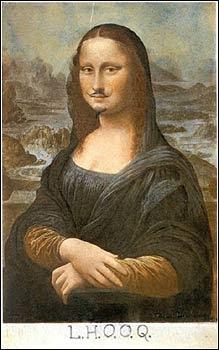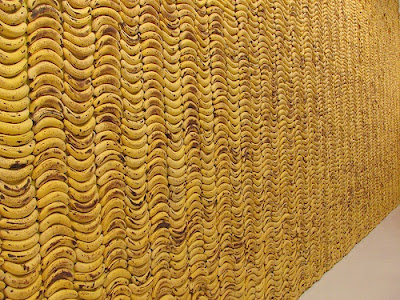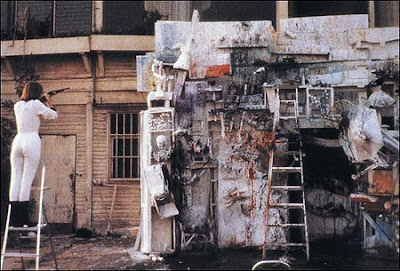
Duchamp, bad father
“The career of Marcel Duchamp offers a rare instance of chaos theory as applied to the history of art. His concept of the ready-made work of art came out of the blue. It could not have been foreseen and was by no means inevitable. There were no precedents in art for the idea that by taking an ordinary object from the real world and placing it in an art gallery, the artist could completely change its meaning.
“By detaching art from aesthetics, Duchamp set it spinning on a different course from the one it had followed since the Renaissance – and thereby ensured that almost all significant art made in the US and continental Europe after his death in 1968 would, at some level, be touched by his ideas…”
Marcel Duchamp: Art changed for ever, The Telegraph UK.
“In 1957 the Museum of Fine Arts, Boston, snagged what appeared to be a rare masterpiece by the 10th-century Chinese painter Guan Tong. Not only was Drinking and Singing at the Foot of a Precipitous Mountain a spectacular example of the monumental landscape tradition — a view of cloud-dappled peaks, densely forested slopes and swirling waters — but the painting’s pedigree also seemed impeccable. Inscriptions on the worn, fragile silk indicated that through the centuries it had been among the treasured possessions of princes, emperors and connoisseurs. The latest of those collectors was Zhang Daqian, then in his 50s, one of the pre-eminent authorities on Chinese art and a renowned painter in his own right. But not long after the acquisition, doubts began to creep in. They centered on this man whose stature had gone a long way toward authenticating the work. Many of the masterpieces that passed through Zhang’s hands seemed too good to be true…”
Close Reading – A Silken Mountain of Forgery, The New York Times.
Things I Have Learned In My Life So Far, an interactive exhibition by Stefan Sagmeister, opens at Deitch Projects on January 31, 2008. The exhibition will include works that have a life of their own, transforming throughout the exhibition as viewers engage with them. Things I Have Learned In My Life So Far is timed to coincide with the release of a new book of the same title, which surveys Sagmeister’s illustrious career.

Stefan Sagmeister is one of today’s most innovative and influential graphic designers. His conception and application of graphic design goes above and beyond traditional notions of the practice, taking it to the realm of performative and conceptual art, painting and sculpture. Sagmeister is most widely known for his album cover artwork for bands like The Rolling Stones, Talking Heads and Lou Reed, and for books, like Mariko Mori‘s Wave UFO for the Kunsthaus Bregenz, which function as sculptural objects…”
7,200 bananas, Makezine.com
The Spice Girls may have coined the term “girl power”, but Franco-American painter-sculptor Niki de Saint Phalle was practising it long before they were born. Saint Phalle’s version, Nana Power, takes its name from the French word nana, meaning “chick”. It’s the title of a show-stopping image of the artist in which she points a gun at the camera, playing to the public’s perception of her as a woman who muscled her way into a male-dominated art world.

Saint Phalle, take aim.
Nana Power (1970) kicks off a major retrospective of Saint Phalle’s work at Tate Liverpool. The first UK exhibition of the artist’s work since her death in 2002, it is a glorious revelation. Saint Phalle is often dismissed as “playful”, despite her collaborations with many of the art world’s leading figures such as Jasper Johns and Robert Rauschenberg and a vast legacy of works exhibited in some of the world’s most high-profile institutions…”
Niki de Saint Phalle: The power of playfulness, The Telegraph UK.
